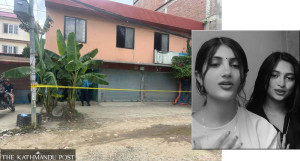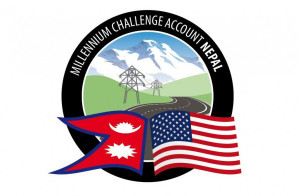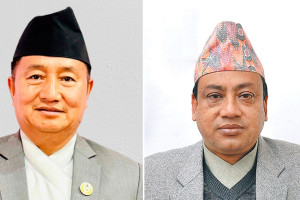National
Government lacks definitive data on students returning from KIIT, Odisha
Data collected at various border points confirms return of over 300 students as of Sunday evening.
Post Report
Following the suspicious death of Prakriti Lamsal and subsequent unrest, Nepali students enrolled at the Kalinga Institute of Industrial Technology (KIIT) in Odisha, India, have begun returning home. However, the Nepal government does not have definitive data on how many students attended the university or how many have returned since the incident.
The data collected from various border points by the Post correspondents as of Sunday evening verified the return of over 300 students through various border entry points. A total of 301 students arrived through four checkpoints: 20 from Kakarbhitta in Jhapa, 36 from Belahiya in Bhairahawa, 83 from Jogbani in Biratnagar, and 162 from Birgunj.
Lamsal was found dead on February 16 after reportedly facing persistent harassment from an Indian batchmate. Fellow Nepali students alleged that despite prior complaints, the university administration failed to take action against the accused.
Despite the significant number of returnees, officials at Nepal’s Ministry of Education have stated they do not have accurate figures on how many Nepali students were originally enrolled at KIIT or how many have since returned. Raju Shrestha, undersecretary at the ministry’s help desk, confirmed that the ministry had no clear data on the number of students affected by the incident.
While the government lacks concrete statistics, education officials reported that only one formal complaint has been lodged so far, with a request from parents for students living in different hostel blocks to be placed together. This complaint has been forwarded to the Ministry of Foreign Affairs.
The issue has sparked considerable debate within Nepal’s political circles, with MPs and government ministers commenting on the situation. Some have taken to social media to express their views, and the Ministry of Education has warned that it may suspend No Objection Certificates (NOCs) for students wishing to study in Odisha if the matter is not resolved satisfactorily. However, the critics opine that the state has shown a lack of interest in collecting data on students who were displaced from the university hostel.
Each year, around 5,000 Nepali students receive government-issued NOCs to study in India, with many others attending Indian institutions without formal approval. In the current fiscal year, 6,6000 students have obtained NOCs in eight months, with 4,373 specifically for India.
The government’s slow response has been compounded by the mishandling of students at KIIT. Following Lamsal’s death and the resulting protests, the university administration expelled over 800 Nepali students, forcing them into difficult situations without adequate support. Some students were abandoned at bus and railway stations after being expelled from their hostels. Although the university tried to pacify the students requesting them to return to the hostel to resume their study, both the parents and the students themselves have expressed concerns about their security. Citing that the university officials prompted the ill-treatment against Nepali students, especially for the latter’s protest after Prakriti's death, the students and their parents have requested the government to offer them an alternative.
As Nepali universities such as Purbanchal University and Tribhuvan University offer to accept credit transfers from the affected students, the Nepal government fails to gather accurate data on the crisis, leaving many students uncertain about their future educational paths.




 28.05°C Kathmandu
28.05°C Kathmandu















